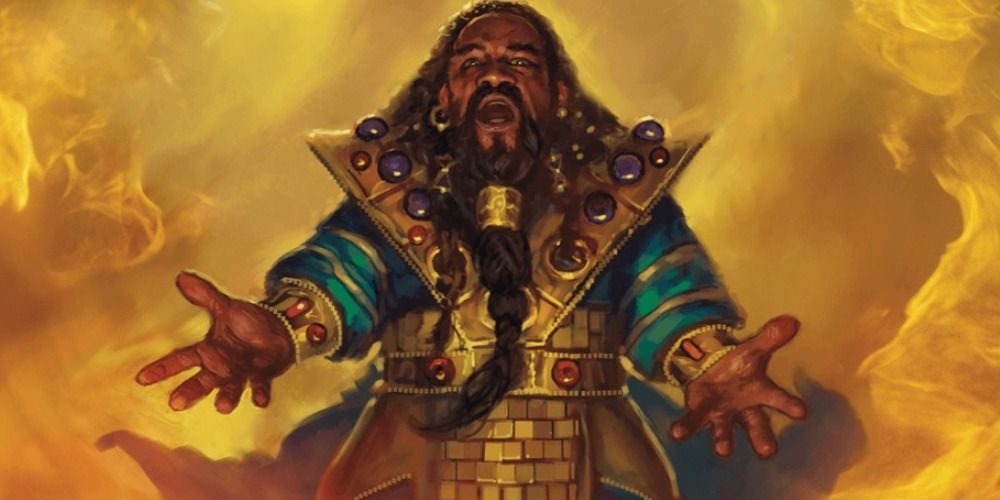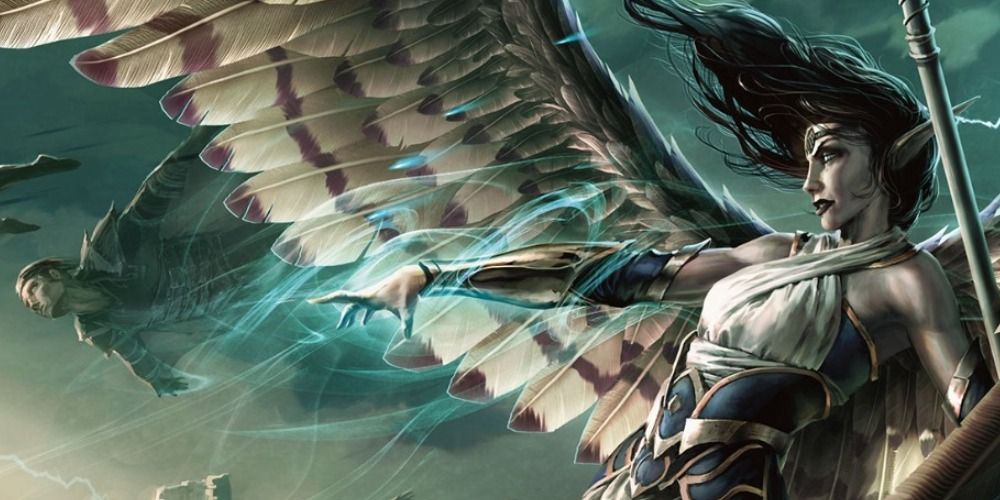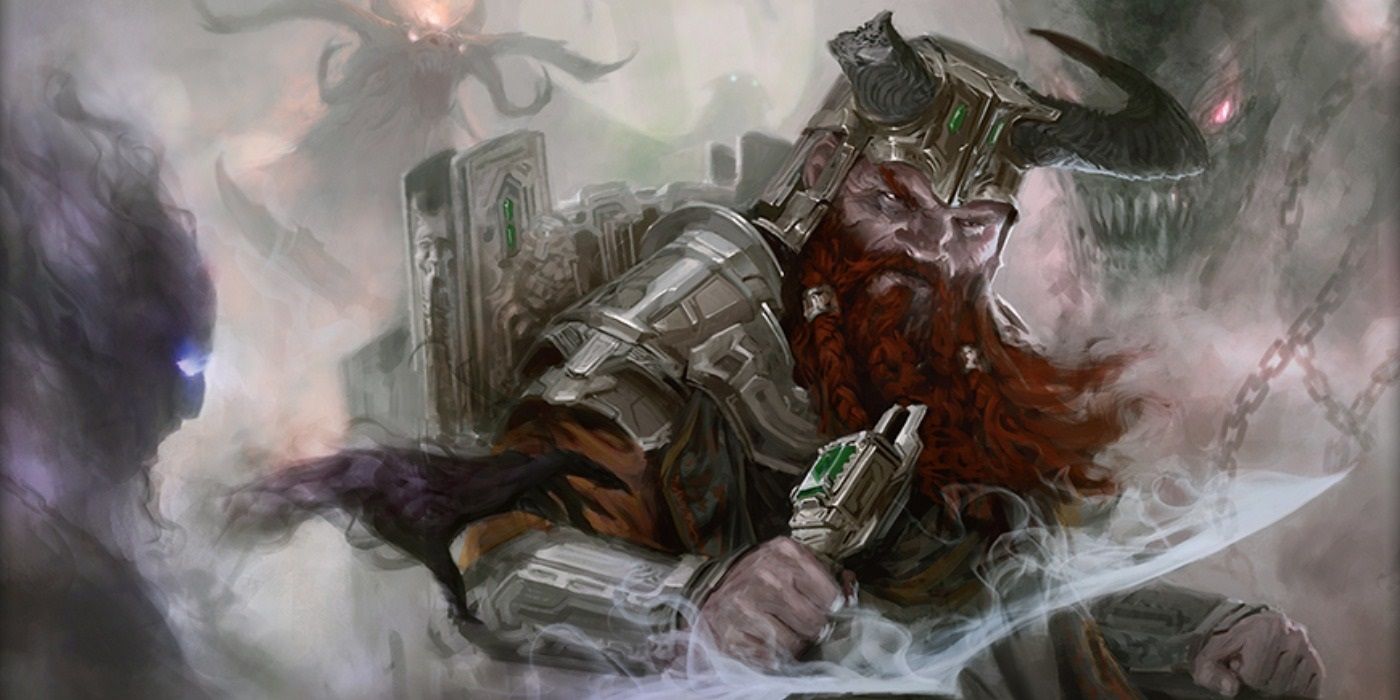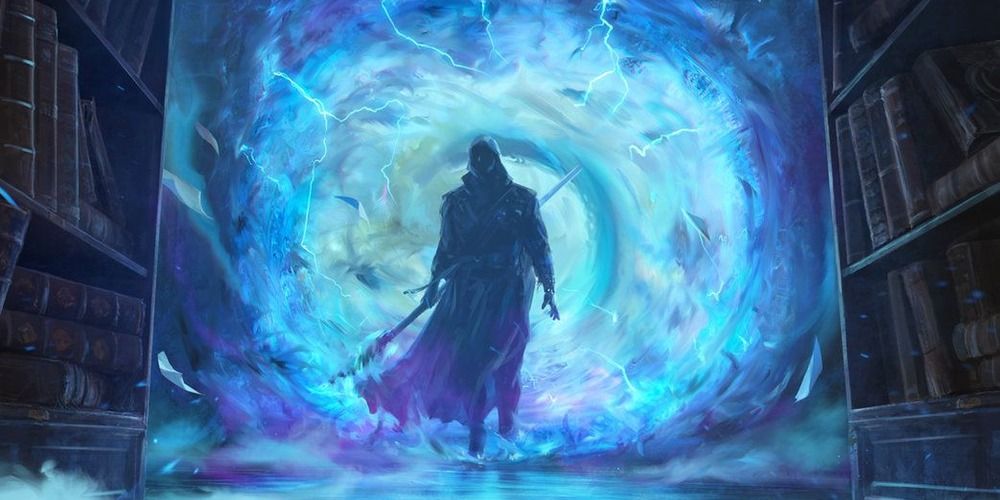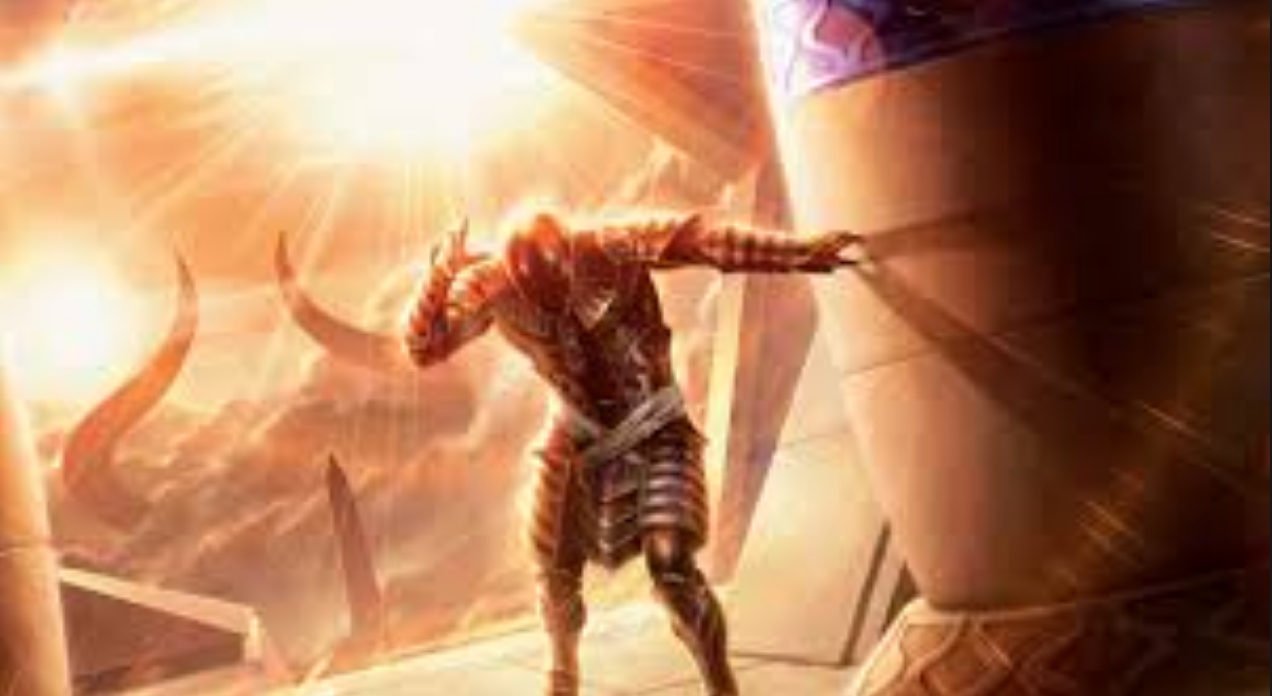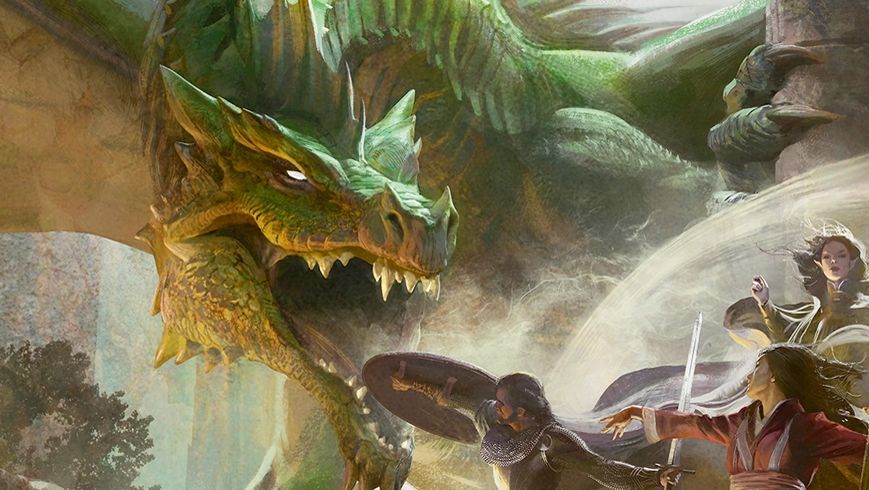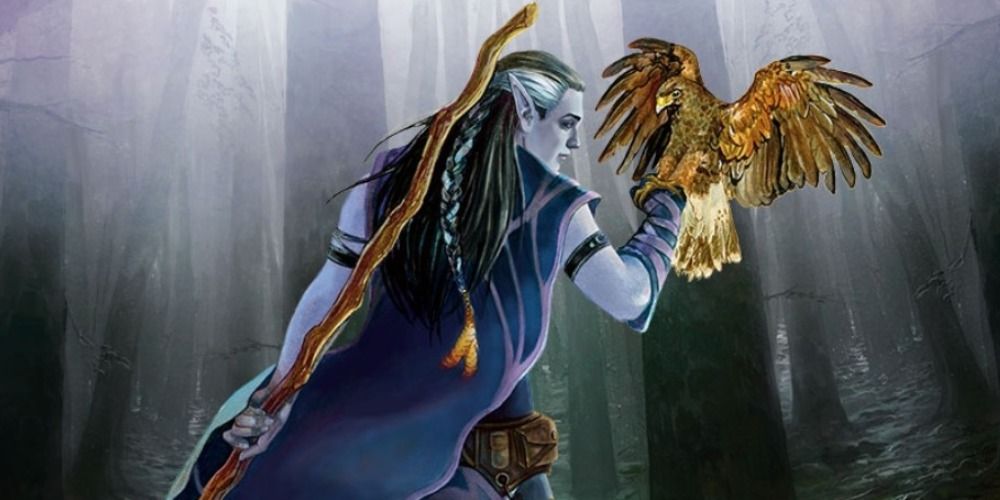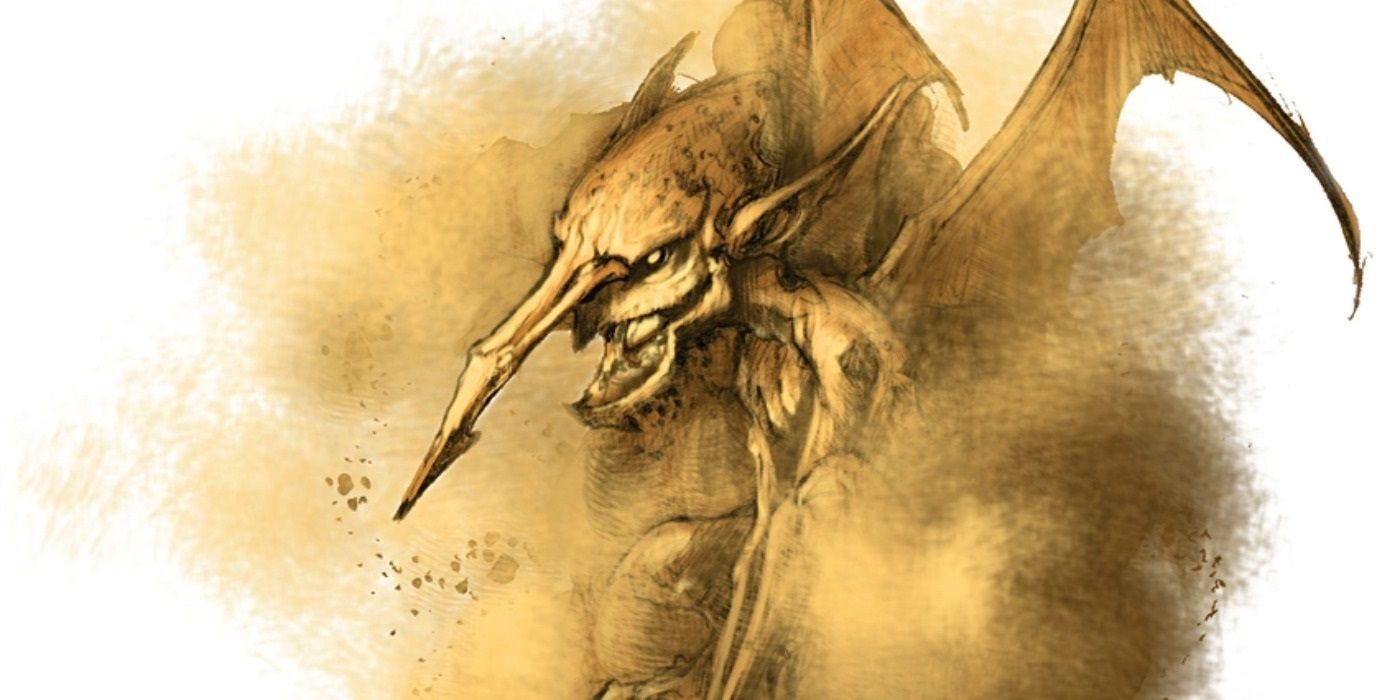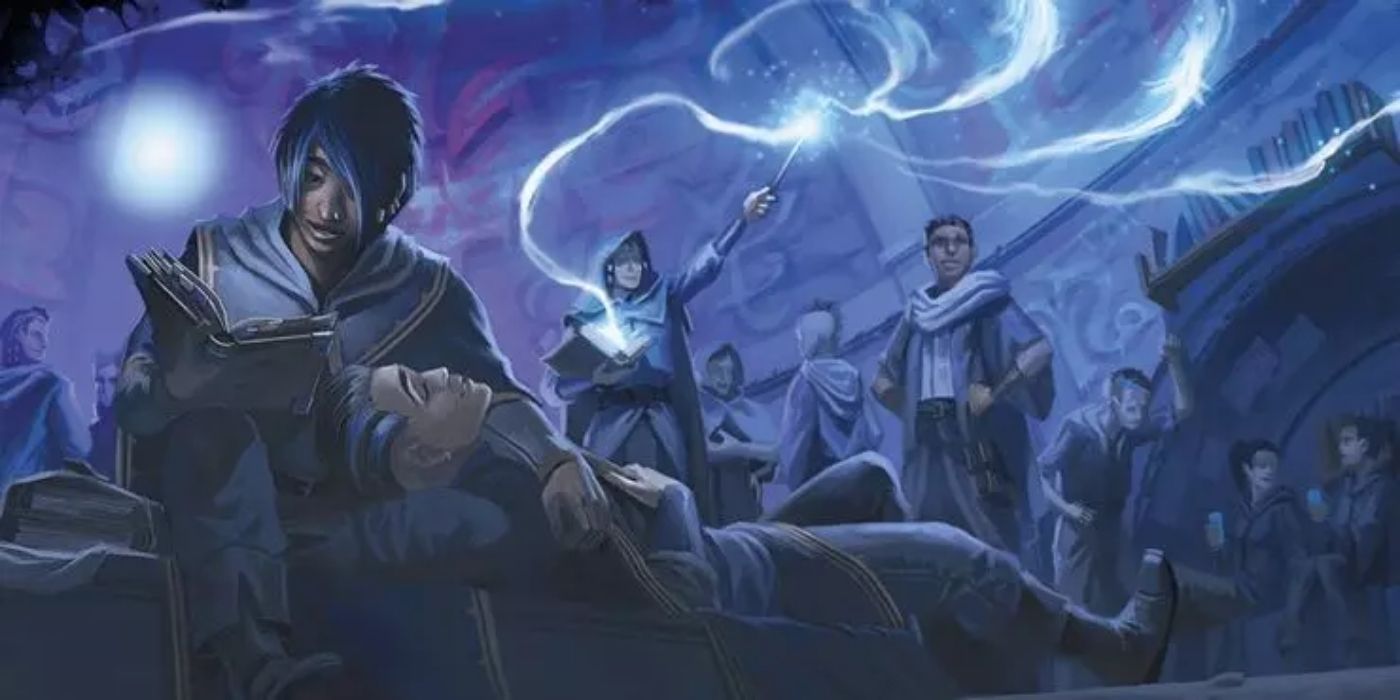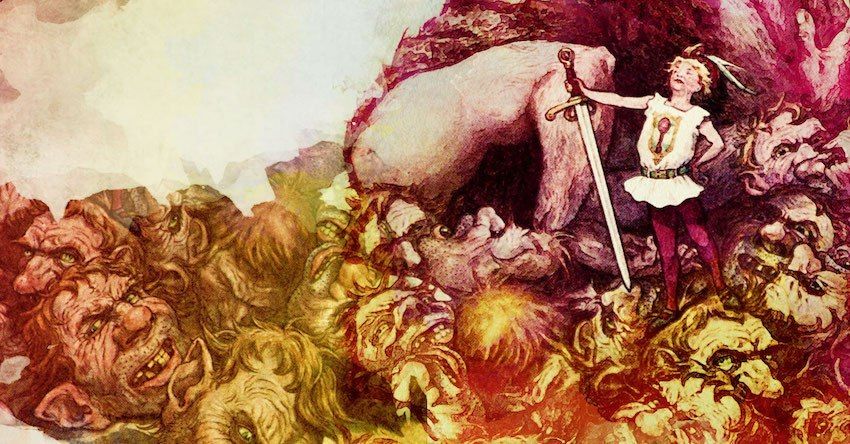Magic isn’t everything in the world of Dungeons & Dragons, but admittedly, it plays a huge role. While non-casters are plenty of fun to play, there is a certain allure to being able to cast illusions and make it rain fireballs. Whether a player chooses to play a full caster, like a wizard or a cleric, or just a partial caster, like a bard or even some subclasses of fighters and rogues, they have a whole range of spells to choose from.
These spells can do a variety of things, not just cause your enemies lots of ouchies. A spell-caster can heal or make things invisible or even force a would-be enemy to temporarily become friends. There are so many spells with various uses, which is one of the attractive parts about being a spell-caster. But which of these spells are the most powerful? It’s hard to say for certain with so many spells, but in preparation for the new Stranger Things/D&D collaboration coming out this spring, we took a crack at trying to identify the game’s 10 Most Powerful Spells.
Updated by Kristy Ambrose on April 11th, 2021: Online gaming has an old-fashioned alternative that has never gone out of style. We even have an acronym for it now, TTRPG, or table-top role-playing game. The past year has seen a resurgence in anything D&D related, partly thanks to recent pop-culture crossovers and the release of Baldur's Gate 3 but also the general global recommendation of staying home. For those that have rolled casters, or perhaps want to know what they're dealing with when they fight them, here are a few more of D&D's most powerful spells.
Mass Heal
A level 9 Cleric's spell that can make the difference between life and death for your party, this spell does exactly what the name suggests. A Cleric can use this spell to restore up to 700 hit points, distributed among their party members, provided they're within a 60-foot radius. At higher levels, this spell can have a wider range and can be used to heal whole armies. Mass Heal is also a handy way to cure friendly characters of other afflictions. Use it on a whole city to cure any diseases or dispel any effects that render a person blind or deaf. Only the Undead and Constructs are immune to the spell's powerful effects.
Fly
Another effective spell that is used for offense instead of defense. After all, powerful doesn’t have to just mean causing the most damage. This third-level transmutation spell allows the caster to grant a flying speed of 60-feet to any willing creature they touch. On the surface, it doesn’t seem like much. A character can fly now, big whoop. However, the spell lasts 10 minutes, which means 60 turns in combat and a flying wizard raining down destruction from above can be a scary thing. The one downside is that this spell requires concentration, meaning if a character gets hit while in flight, there is a chance they could fall. Sometimes the risk outweighs the benefit.
Fireball
In every D&D game, there has been a time when someone has uttered the words, “If only I could cast Fireball.” For being a relatively low-level spell (third-level evocation), Fireball packs a punch. Enemies can try to dodge, but even on a successful check, they still take some fire damage. The spell is AOE, which also causes things in the area to catch fire, and that can definitely be a benefit in a difficult fight that includes multiple opponents. The Fireball causes mass chaos, but what’s D&D without a little bit of chaos?
Healing Spirit
This healing spell has caused a lot of dissension amongst the ranks of D&D fans when it came out in Xanathar’s Guide to Everything. People have accused Healing Spirit of being broken, but we’re not here to judge. All we know is that with this spell, a ranger or druid can do some decent healing in combat with only a bonus action. Party members can walk in and out of a square to get some hit points back, and this spell lasts for an entire minute. Outside of combat is where things get crazy though. Essentially, characters can each get 10d6 hit points back by creating what we like to call a “congo-line of healing.” That’s a lot of healing for a second-level spell. There are recommendations for how to make these spells less powerful, but we say let the Druids and Rangers heal!
Project Image
A handy spell that Bards and Wizards can use to create a duplicate of themselves. Depictions of magic-users in movies or television shows often use this spell as one of their basic defensive tricks. Project Image is useful in a number of solo and group situations and is simple but effective when it comes to confusing your enemies and gaining an advantage in a variety of situations. It's one way for a caster to keep a melee fighter at a safe distance, but the image itself is fragile, dissipating when it's damaged. Characters with a higher intelligence stat can see it's an illusion upon closer inspection, so whatever you're using this spell for, get it done quickly before the illusion is discovered.
Teleport
How great would it be to just open a hole in space and time and remove yourself, or your party, from a sticky situation? That's almost exactly what Bards, Sorcerers, and Wizards can do with the teleport spell. This is a 7th level spell, so it's not exactly for beginners but you don't have to be an expert to use it, either. There are some details to consider. The spell can accommodate up to eight willing creatures or a single object of the spellcaster's choice. If you choose to teleport an object, it has to be smaller than a 10 ft. cube. The destination you choose can be virtually anywhere, but it must be known to you and exist in the same plane of reality.
Charm Monster
Charm Monster is another spell from Xanathar’s that can be extremely powerful if used correctly. It’s pretty much Charm Person, but for creatures, meaning you can befriend the big bad and avoid the final boss battle the DM has been planning for weeks. It does require a Wisdom save, but if the creature fails, it is Charmed for an entire hour. Any decent player can probably find plenty of fun uses for a Charmed owlbear, we’re sure of it.
There is the caveat that if the creature is already locked in combat with the caster’s party, the creature receives an advantage on its save. That’s not great, but at the same time, can be avoided if cast prior to entering combat. This largely depends on whether the DM is willing to let it happen, but hey, it doesn’t hurt to try, right?
Sunburst
Fans of The Adventure Zone podcast will recognize this spell as one that Taako casts during the final battle of the Balance Arc when things were starting to look dire for the Tres Horny Boys. Not only does this spell inflict 12d6 damage on a failed Constitution save, but it also causes people who failed that save to be blinded. This means that not only do they automatically fail ability checks that require sight, but they also have a disadvantage on their attacks and any attacks on them have an advantage. Not bad at all.
Meteor Swarm
This spell is pretty much Fireball on steroids, and it's just as much fun as it sounds. Wizards and Sorcerers can learn this spell at 9th level, making it one of the more effective high-level Evocation spells. The caster can make it rain meteors and inflict 20d6 fire damage and an additional 20d6 bludgeoning damage. A successful Dexterity save reduces that damage by half, but that’s still 20d6 damage, which is not fun at all.
Psychic Scream
Psychic Scream doesn’t cause as much damage as Meteor Swarm, but it gets the slot above it on the list for two reasons. The first is that Meteor Swarm cannot differentiate between friend and foe, whereas Psychic Scream can. The caster gets to choose up to 10 creatures for this to effect within its 90-foot range. A failed save also stuns the enemies, which is super useful in battle. There is a saving throw, but it’s an Intelligence save and not a lot of creatures are good at those. This spell will definitely give any party an upper hand during a big fight.
Wish
The description for the spell starts, “Wish is the mightiest spell a mortal creature can cast.” There are endless uses for this spell. At the most basic level, the caster can replicate any eighth-level or lower spell without having to worry about components or anything like that, but there are plenty of other uses. A caster can heal their entire party or grant resistance to something or even create an object worth many, many gold pieces. But a spell like Wish can’t just be confined to a list of certain outcomes. As far as we’re concerned, as long as the DM is okay granting the wish, then it’s doable. That being said, the spell does take a toll on the caster, and the DM is well within their right to create unforeseen effects or outcomes. Obviously, that’s not ideal, but it makes for good roleplay.
Disintegrate
Not much more needs to be said about this Transmutation spell that's usable by 6th level Wizards and Sorcerers. It means instant oblivion, and resurrection is often impossible, available only via a Wish or True Resurrection spell since all that's left of the target are any magical items that it was carrying. The target doesn't have to be a living thing like a creature or a person, however. Disintegrate can also be used to turn virtually any obstacle, magical or otherwise, into a pile of dust.
Power Word Kill
Here we have the classic insta-kill spell. There is no check, no save, no roll, no nothing. By simply saying a word, the caster can make a creature die.
The only requirement is that the creature has to have fewer than 100 hit points, but that hardly seems like it’s enough. But we can’t deny the power of being able to talk someone to death, so it gets the number two spot on our list.
Arcane Eye
Arcane Eye is a 4th level Divination spell usable by Clerics and Wizards. It's not an offensive spell, but it's handy and possibly even OP when it comes to gathering information. The invisible eye that the caster creates hovers above the ground at a height of 30 feet or less, and is small enough to fit through pipes and keyholes. This allows for detailed reconnaissance and long-term spying, and it's just as useful in dungeons as it is in taverns, private homes, or other venues where access is difficult.
Simulacrum
We’re going to start with the bad news for our number one spell; it requires a ruby that costs 1,500 gold pieces. It’s a lot of money, we know, but it’s worth the price. This spell allows the caster to create a copy of a beast or person and while it only has half the amount of hit points as the original, it's otherwise a perfect duplicate. It can take action on its own and has the same statistics as the original being.
There are some caveats in that it cannot regain spell slots and it does not level up, but still. If a wizard who is able to cast this seventh-level spell makes a Simulacrum of himself, that’s a whole lot of extra spell slots the wizard himself doesn’t have to waste. This can be very useful in a tough combat situation, but even outside of combat, this spell has so much potential. There are endless scenarios in which a perfect duplicate can prove useful. There are also many shenanigans a party can get into with a Simulacrum, and what is D&D without shenanigans?


